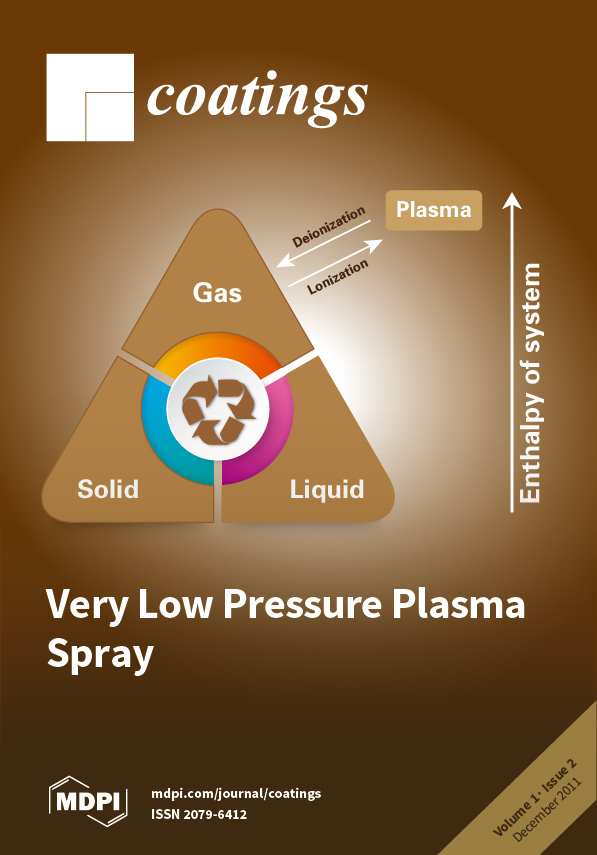Reactive plasma spraying is a promising technology for the
in situ formation of aluminum nitride (AlN) coatings. Recently, it became possible to fabricate cubic-AlN-(
c-AlN) based coatings through reactive plasma spraying of Al powder in an ambient atmosphere. However, it was difficult
[...] Read more.
Reactive plasma spraying is a promising technology for the
in situ formation of aluminum nitride (AlN) coatings. Recently, it became possible to fabricate cubic-AlN-(
c-AlN) based coatings through reactive plasma spraying of Al powder in an ambient atmosphere. However, it was difficult to fabricate a coating with high AlN content and suitable thickness due to the coalescence of the Al particles. In this study, the influence of using AlN additive (
h-AlN) to increase the AlN content of the coating and improve the reaction process was investigated. The simple mixing of Al and AlN powders was not suitable for fabricating AlN coatings through reactive plasma spraying. However, it was possible to prepare a homogenously mixed, agglomerated and dispersed Al/AlN mixture (which enabled in-flight interaction between the powder and the surrounding plasma) by wet-mixing in a planetary mill. Increasing the AlN content in the mixture prevented coalescence and increased the nitride content gradually. Using 30 to 40 wt% AlN was sufficient to fabricate a thick (more than 200 µm) AlN coating with high hardness (approximately 1000 Hv). The AlN additive prevented the coalescence of Al metal and enhanced post-deposition nitriding through N
2 plasma irradiation by allowing the nitriding species in the plasma to impinge on a larger Al surface area. Using AlN as a feedstock additive was found to be a suitable method for fabricating AlN coatings by reactive plasma spraying. Moreover, the fabricated coatings consist of hexagonal (
h-AlN),
c-AlN (rock-salt and zinc-blend phases) and certain oxides: aluminum oxynitride (Al
5O
6N), cubic sphalerite Al
23O
27N
5 (ALON) and Al
2O
3. The zinc-blend
c-AlN and ALON phases were attributed to the transformation of the
h-AlN feedstock during the reactive plasma spraying. Thus, the zinc-blend
c-AlN and ALON phases were not included in the feedstock and were not formed through nitriding of the Al.
Full article





